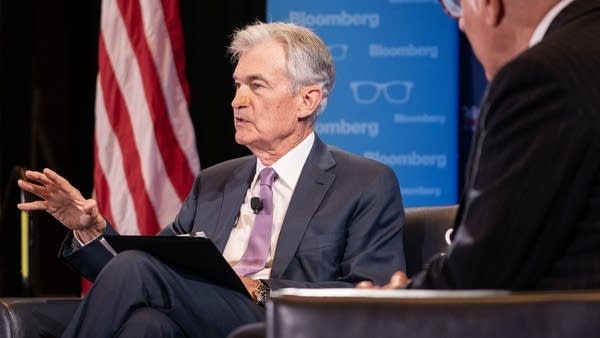
Two percent. That’s the Federal Reserve’s ideal when it comes to annual inflation. For the last few years, as anyone who buys anything in this economy knows, it has been much higher than that.
Now, though, just over two years since the Fed started raising interest rates to bring inflation back down, that target is getting close. Close enough that, when the Federal Open Market Committee meets this week for one of its eight regularly scheduled conclaves each year, it’s expected to signal plans to cut interest rates soon. Many experts think it will happen in September.
But price stability, represented by that 2% inflation target, is just one part of the Fed’s dual mandate. The other is maximum employment, defined as “the highest level of employment or lowest level of unemployment that the economy can sustain while maintaining a stable inflation rate.”
“The question is, well, what does that mean in terms of the numbers, right?” said Michelle Holder, an associate professor of economics at John Jay College at the City University of New York. “Does it mean a 4 percent unemployment rate, a 5 percent unemployment rate? The Fed is not specific about that.”
Why not?
“Because things are changing all the time. The economy is changing, the economy is dynamic,” she said. “So when you start to rely on just one target number, you risk missing the fact that those benchmarks may need to change over time as the economy changes, as the workforce changes.”
Case in point: In 2013, the Fed estimated maximum employment to correspond with an unemployment rate of somewhere between 5% and 6%.
Bill English worked at the Fed’s Board of Governors at the time. Just five or six years later, he said, “in the late twenty-teens, the unemployment rate kept coming down, the labor market got tighter, but inflation didn’t kick up. So they marked down their assessment of what maximum employment could achieve in terms of the unemployment rate.”
That new estimate? About 4%. Which, coincidentally, is right about where the U.S. economy is now.
That raises the question, could the unemployment rate go even lower without triggering inflation? And, more importantly, could it stay lower?
“The Fed could achieve higher levels of employment for a little while,” said English, now a professor in the practice of finance at the Yale School of Management. “For a couple of years, they could engineer a big boom.”
But eventually, such a big job boom would likely lead to rising inflation, English said. “So the notion is that there is a maximum sustainable level of employment that you can achieve and maintain.”
Generally speaking, if more and more people are employed and the unemployment rate drops and drops further, companies may have trouble finding workers, and they’ll raise wages to attract them. That would increase their operating costs, and eventually they’ll turn around and pass those costs on to customers in the form of higher prices. The Fed’s goal is to get as many people employed as possible without letting that happen.
“It doesn’t necessarily mean that everybody is employed,” said Kathryn Dominguez, a professor of public policy and economics at the University of Michigan. “It means that everyone is employed that could be employed without leading to higher inflation.”
That maximum sustainable level of employment is always going to be a moving target.
“The labor market is the largest and most complicated market in the economy,” said Erica Groshen, former commissioner of the Bureau of Labor Statistics, now at the Industrial and Labor Relations School at Cornell University. “And we prize the dynamism of our economy. However, that complicates measurement.”
At least, measuring it with a single number. When it comes to assessing maximum employment, said Michelle Holder at John Jay, “it’s never just one number.”
It’s a bunch of numbers. In addition to the unemployment rate, the Fed is looking at what’s happening with wages, the ratio of available jobs to available workers, how many people are quitting.
It’s asking, “What is happening with the number of people who are not in the labor force? Is that number growing?” Holder said. “What is happening with Black unemployment?”
Kathryn Dominguez, at the University of Michigan, said the reality is the Fed is doing that with inflation too, even though it does have that 2% target.
“Even that is not straightforward,” she said. “It’s more straightforward than the maximum employment mandate, but even on the inflation side, we have a lot of different measures of prices.”
There’s PCE, the personal consumption expenditures index, which is the Fed’s preferred measure of inflation. There’s also the consumer price index, the producer price index and more.
“So I don’t want to make it seem like inflation is easy and employment is really hard,” Dominguez said. “I think they’re both difficult, especially as economies evolve.”










